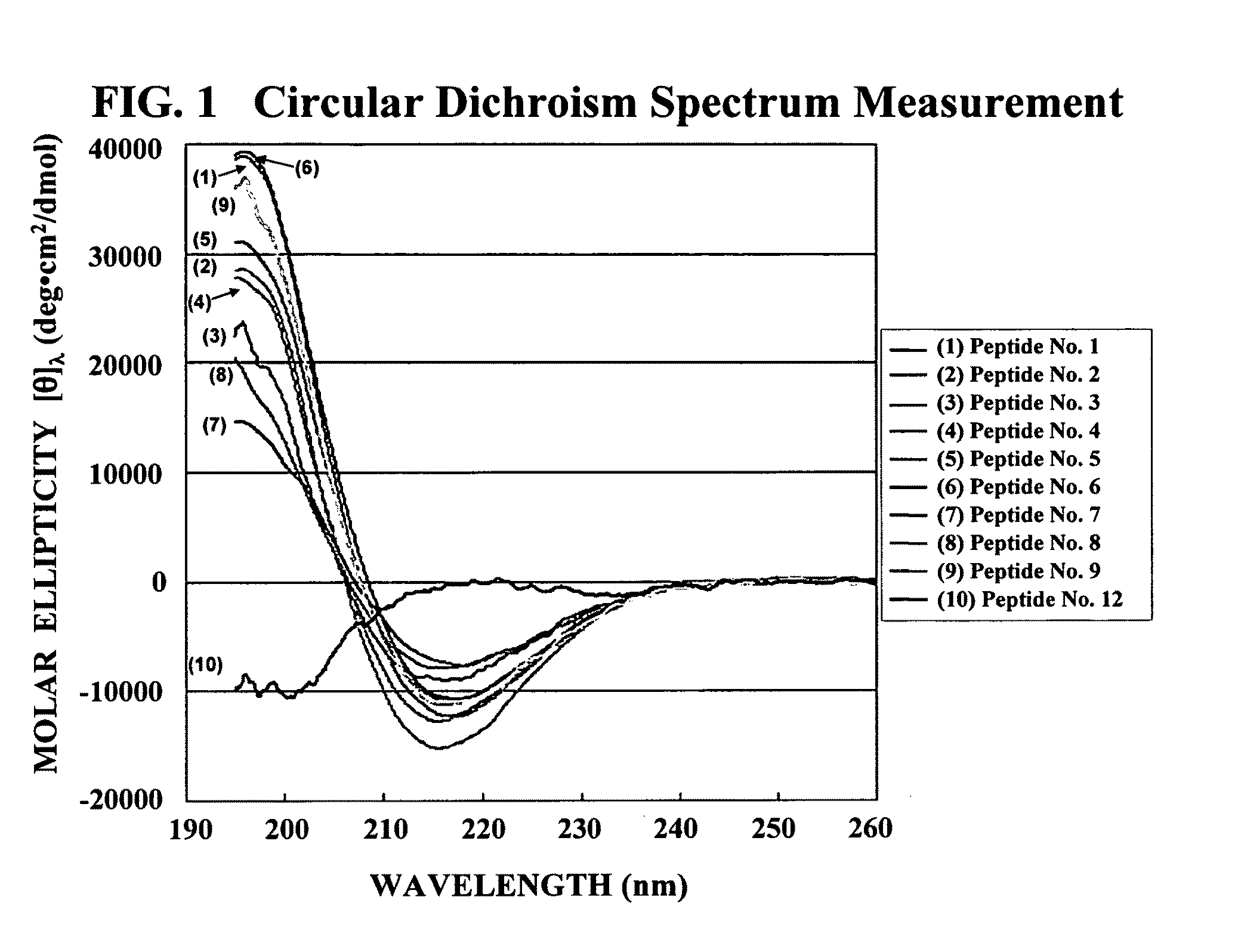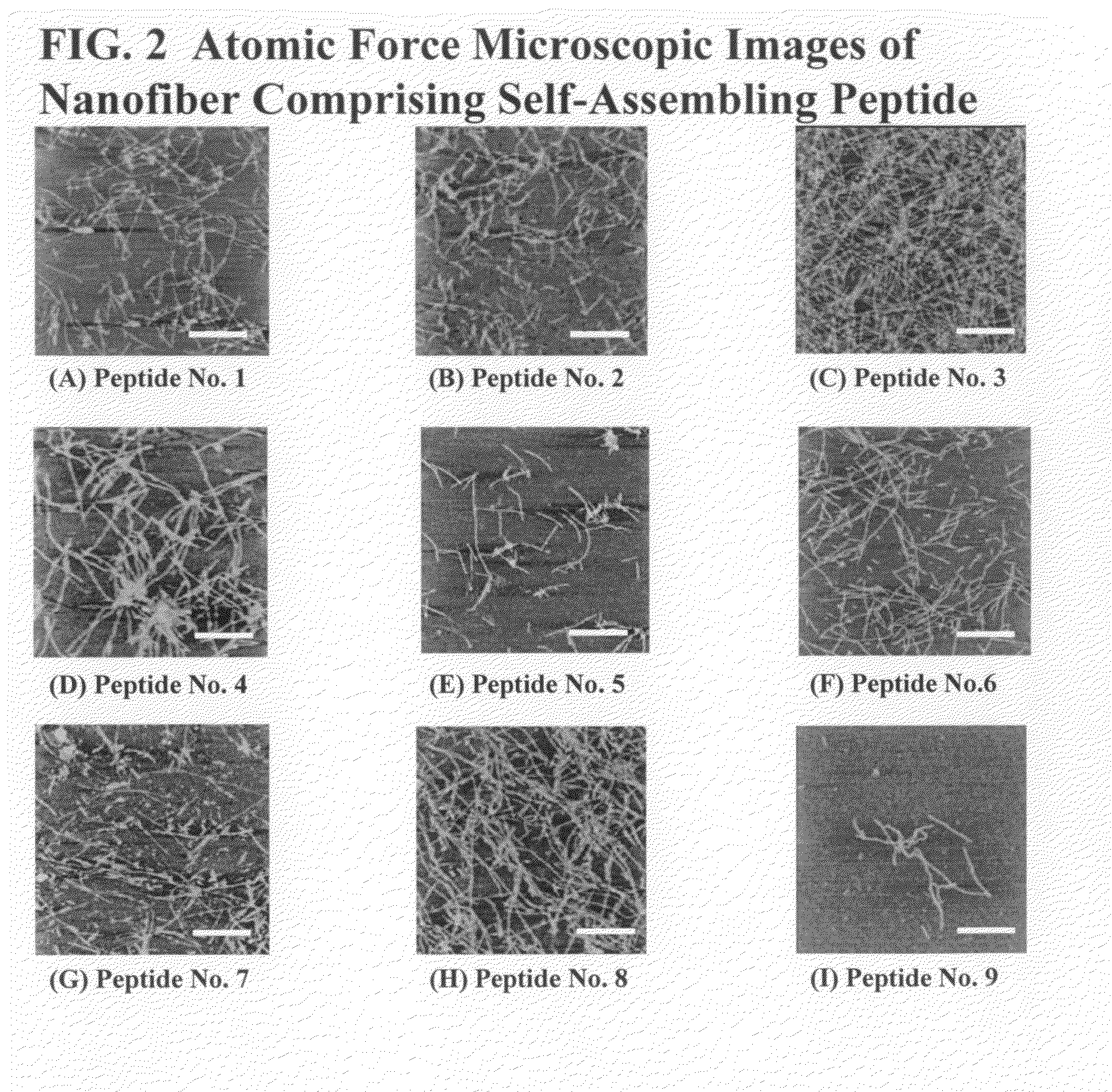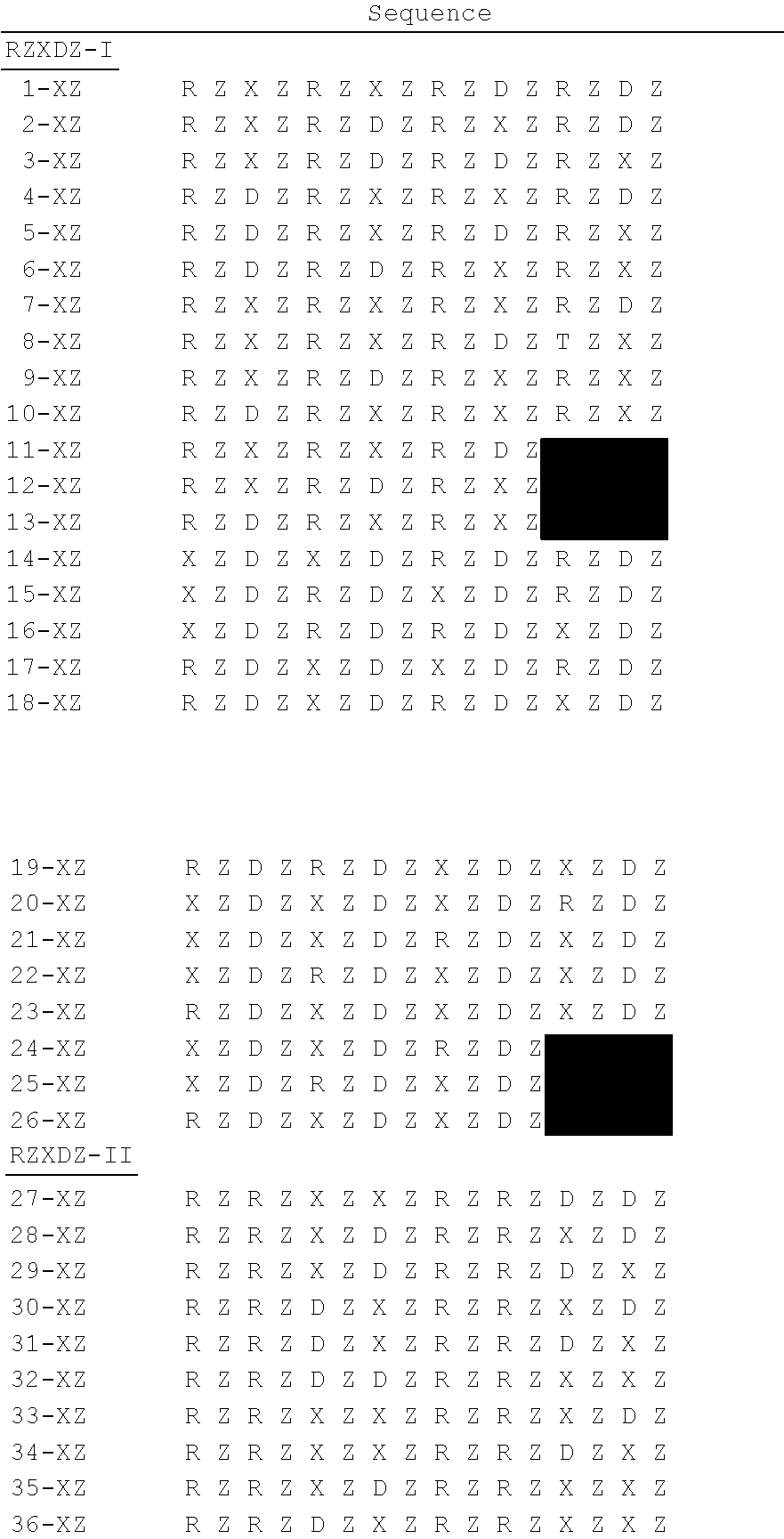Self-assembling peptide and gel produced from the same
a technology of peptides and gels, applied in the direction of peptide/protein ingredients, drug compositions, antibacterial agents, etc., can solve the problems of limited application of collagen gels, complicated procedures upon use, and inability to fully integrate peptides, etc., to achieve excellent gel formability, excellent transparency, and excellent effects
- Summary
- Abstract
- Description
- Claims
- Application Information
AI Technical Summary
Benefits of technology
Problems solved by technology
Method used
Image
Examples
production example 1
Synthesis of Peptide
[0050]Peptide No. 1 (sequence-RASARADARASARADA, SEQ ID NO: 1) was synthesized in the following manner in accordance with a Fmoc solid phase synthesis method.
[0051]1) Preparation of Solid Phase Carrier Resin
[0052]A reaction vessel on a solid phase synthesizer (trade name: Solid Organic Synthesizer CCS-150M, manufactured by EYELA) was charged with 400 mg of a solid phase carrier resin for peptide synthesis CLEAR™-Amide Resin (code no.: RCY-1250-PI, 100 to 200 mesh, 4-(2,4-dimethoxyphenyl-fluorenylmethyloxycarbonyl-aminomethyl)phenoxyacetyl-norleucyl-CLEAR Resin, manufactured by PEPTIDES INSTITUTE.
[0053]Next, 5 mL of dichloromethane (manufactured by Wako Pure Chemical Industries, Ltd.) was added to the solid phase carrier resin. The resulting mixture was stirred at room temperature for 10 minutes, and the solid phase carrier resin was allowed to swell. The resulting product was subjected to suction filtration, thereby removing dichloromethane. Further, the procedure...
production example 2
Synthesis of Peptide
[0064]The same procedures as in Production Example 1 mentioned above were carried out to synthesize peptides of Peptide Nos. 2 to 12 listed in Table 8 given hereinbelow.
[0065]
TABLE 8Peptide No.Amino Acid SequenceSEQ ID NO:1RASARADARASARADA12RANARADARANARADA23RAAARADARAAARADA34RASARADARADARASA45RADARASARASARADA56RASARASARASARADA67RASARADARASA78KASAKAEAKASAKAEA89SAEAKAEASAEAKAEA910 RADARADARADARADA10 11 RFDFRFDFRFDFRFDF11 12 HKHQHDHKHQHDHKHQHD12
reference example 1
Calculation of Charge of Peptide
[0066]In accordance with the method of Lehninger [Biochimie, 1979], the charge of the overall peptide at each pH was calculated. The method of Lehninger was performed using a program utilizable on a website for EMBL WWW Gateway to Isoelectric Point Service (http: / / www.embl-heidelberg.de / cgi / pi-wrapper.pl).
[0067]Here, since alanine, valine, asparagine and glutamine are uncharged amino acids, these amino acids could not be distinguished by the program. Therefore, these amino acids were calculated assuming that these amino acids were the same. In addition, in the program, the calculation was made assuming that both of the terminals of the peptide molecule are an amino group and a carboxyl group, respectively, and the charge on the terminal portions was corrected by subtracting a calculated value for polyalanine (charged only at both of the terminals) having the same degree of polymerization as the self-assembling peptide from the calculated value of the ...
PUM
| Property | Measurement | Unit |
|---|---|---|
| visible light transmittance | aaaaa | aaaaa |
| visible light transmittance | aaaaa | aaaaa |
| visible light transmittance | aaaaa | aaaaa |
Abstract
Description
Claims
Application Information
 Login to View More
Login to View More - R&D
- Intellectual Property
- Life Sciences
- Materials
- Tech Scout
- Unparalleled Data Quality
- Higher Quality Content
- 60% Fewer Hallucinations
Browse by: Latest US Patents, China's latest patents, Technical Efficacy Thesaurus, Application Domain, Technology Topic, Popular Technical Reports.
© 2025 PatSnap. All rights reserved.Legal|Privacy policy|Modern Slavery Act Transparency Statement|Sitemap|About US| Contact US: help@patsnap.com



